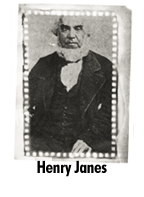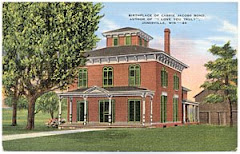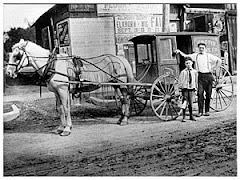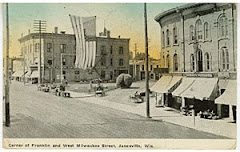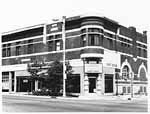Sunday, March 27, 2011
Friday, March 11, 2011
Pictures for your power points Lavinia, Frances and Doctors



Sources:
http://www.google.com/imgres?imgurl=http://hulshofschmidt.files.wordpress.com/2011/02/frances-willard.jpg&imgrefurl=http://hulshofschmidt.wordpress.com/2011/02/07/womens-history-february-7/&usg=__cDRPMsnWGpLVcVUcUAKrVB3nWm4=&h=574&w=400&sz=36&hl=en&start=1&zoom=1&um=1&itbs=1&tbnid=287OEfNweMqfZM:&tbnh=134&tbnw=93&prev=/images%3Fq%3Dfrances%2Bwillard%26um%3D1%26hl%3Den%26safe%3Dactive%26tbs%3Disch:1&ei=91Z6TY7SKsO8qwG5lrmdBw
http://www.google.com/imgres?imgurl=http://hulshofschmidt.files.wordpress.com/2011/02/frances-willard.jpg&imgrefurl=http://hulshofschmidt.wordpress.com/2011/02/07/womens-history-february-7/&usg=__cDRPMsnWGpLVcVUcUAKrVB3nWm4=&h=574&w=400&sz=36&hl=en&start=1&zoom=1&um=1&itbs=1&tbnid=287OEfNweMqfZM:&tbnh=134&tbnw=93&prev=/images%3Fq%3Dfrances%2Bwillard%26um%3D1%26hl%3Den%26safe%3Dactive%26tbs%3Disch:1&ei=91Z6TY7SKsO8qwG5lrmdBw
http://www.google.com/imgres?imgurl=http://www.guide-to-symbols.com/_images_pub1/caduceus_esclapius160.gif&imgrefurl=http://www.guide-to-symbols.com/caduceus/&usg=__2mCMp3B-PB0RVSWCWg7A2uy-Ups=&h=160&w=205&sz=8&hl=en&start=4&zoom=1&um=1&itbs=1&tbnid=BswT_66NmoggNM:&tbnh=82&tbnw=105&prev=/images%3Fq%3Dsymbols%2Bfor%2Bmedicine%26um%3D1%26hl%3Den%26safe%3Dactive%26tbs%3Disch:1&ei=_Fl6TdSdHoi7qAH3l-XyDA
Tuesday, February 1, 2011
more links
Information about the beginning of Janesville:
http://www.usgennet.org/usa/wi/county/rock/County/HistCo002.html
Burr Robbins Circus
http://www.hmdb.org/marker.asp?marker=22743
http://www.circushistory.org/Olympians/OlympiansR2.htm
A picture of an ad for Burr Robbins Circus coming to Janesville:
http://www.flickr.com/search/?q=burr%20robbins&w=45705704%40N00
William Morrison Tallman http://www.wisconsinstories.org/janesville/essay/index.cfm?page=4
http://lincoln200.wisconsin.gov/category.asp?linkcatid=2890&linkid=1399&locid=156
http://freepages.history.rootsweb.ancestry.com/~wirockbios/Bios/bios0145.html
http://www.wisconsinhistory.org/wmh/archives/search.aspx?area=browse&volume=44&articleID=21677
Henry F. Janes
http://www.forwardjanesville.com/CommunityInformation/JanesvilleHistoryandFacts/JanesvilleHistory/tabid/818/Default.aspxs/JanesvilleHistory/tabid/818/Default.aspx
http://www.wisconsinstories.org/janesville/essay/
an article written by Henry Janes
http://www.wisconsinstories.org/janesville/essay/
Brother Joseph Dutton
http://www.wisconsinhistory.org/dictionary/index.asp?action=view&term_id=14920&term_type_id=1&term_type_text=people&letter=Daction=view&term_id=14920&term_type_id=1&term_type_text=people&letter=D
http://rolwaipahu.org/twojosephs.htm
http://www.wisconsinhistory.org/thisday/index.asp?day=27&month=4
http://www.damien-duttonleprosysociety.org/ourmission.php
http://genforum.genealogy.com/hi/molokai/messages/11.html
http://books.google.com/books?id=PPSNDLwnJjwC&pg=PA12&lpg=PA12&dq=joseph+dutton,+janesville&source=bl&ots=If9dgxaHkM&sig=RUfj8kT2H09yJajUviDWvjglt28&hl=en&ei=OnFVTYnWD8mr8AbKz5WEBw&sa=X&oi=book_result&ct=result&resnum=5&ved=0CCQQ6AEwBA#v=onepage&q=joseph%20dutton%2C%20janesville&f=false
http://www.whirledwydeweb.com/kalaupapa/chronology.html
http://hicatholicmom.blogspot.com/2008/07/finally-someone-recognizes-brother.html
Information about John Inman, George Follmer, William Holmes, Jr., and Joshua Holmes:
and Joshua Holmes:
http://zoominlocal.com/janesville-gazette/2010/10/10/#?article=1037764
begin at "History of Rock County"
http://www.archive.org/stream/rockcountywiscon02brow/rockcountywiscon02brow_djvu.txt
http://books.google.com/books?id=kgu1hscutaoC&pg=PA7&lpg=PA7&dq=william+holmes,+jr.,+janesville&source=bl&ots=EQ1vZ7s6kW&sig=s2hu61qDi_VyKNerks1PgXMmMzM&hl=en&ei=ZXxJTZl&ots=EQ1vZ7s6kW&sig=s2hu61qDi_VyKNerks1PgXMmMzM&hl=en&ei=ZXxJTZ
http://books.google.com/books?id=WkEVAAAAYAAJ&pg=PA526&lpg=PA526&dq=william+holmes,+jr.,+janesville&source=bl&ots=Ux1H5BZpML&sig=XjORhGylVgyRuOBERw4E7l3KVNk&hl=en&ei=ZXxJTZ-VHon2tgPA8sSTCg&sa=X&oi=book_result&ct=result&resnum=10&sqi=2&ved=0CE0Q6AEwCQ#v=onepage&q=william%
20holmes%2C%20jr.%2C%20janesville&f=false
http://www.ci.janesville.wi.us/citysite/service_detail.aspx?Title=History%20of%20Janesville&Dept=Community
http://books.google.com/books?id=VMEvAQAAIAAJ&pg=PA550&lpg=PA550&dq=george+follmer,+janesville+history&source=bl&ots=uyumgITUjm&sig=u0T1yJFljLOYxyNI3N1vf7F51bw&hl=en&ei=Z35JTe_3EImqsAPRntGUCg&sa=X&oi=book_result&ct=result&resnum=3&sqi=2&ved=0CB8Q6AEwAg#v=onepage&q=george%20follmer%2C%20janesville%20history&f=falseid=VMEvAQAAIAAJ&pg=PA550&lpg=PA550&dq=george+follmer,+janesville+history&source=bl&ots=uyumgITUjm&sig=u0T1yJFljLOYxyNI3N1vf7F51bw&hl=en&ei=Z35JTe_3EImqsAPRntGUCg&sa=X&oi=book_result&ct=result&resnum=3&sqi=2&ved=0CB8Q6AEwAg#v=onepage&q=george%20follmer%2C%20janesville%20history&f=false
http://freepages.books.rootsweb.ancestry.com/~wirockbios/1873/73Hist/1873Hist03.html
A fantastic link, giving more detail:
http://books.google.com/books?id=-72xa6T3pEAC&pg=PA135&lpg=PA135&dq=george+follmer,+janesville,+wi&source=bl&ots=-Bj5aK3tMC&sig=xS80KMuDPKqrZKH6yKfO6XJZSRQ&hl=en&ei=mX9JTZ_HA8bEgQfq560H&sa=X&oi=book_result&ct=result&resnum=5&ved=0CCsQ6AEwBDgU#v=onepage&q&f=false
An article quoted by a relative of John Inman's, you need to scroll down a little to get to it, but it is so worth it!
http://inman.surnameweb.org/newsletters/nwsltr2-2.htm
This is history of Green County by Henry Janes
http://www.scls.lib.wi.us/lud/green2/images/00000014.pdf
Biography about Henry Janes, including information on the first cabin builders
http://www.rootsweb.ancestry.com/~wirocktp/bios/henryfjanesbio.htm
Ira Miltimore, the building of the first blind school:
http://books.google.com/books?id=c1RSZ0EZVIIC&pg=PA407&lpg=PA407&dq=ira+miltimore,+janesville&source=bl&ots=dXpmLNfxCU&sig=76jGyCfXYGPWallPxZmj2gU2kTc&hl=en&ei=RIZJTd2ADobPgAf-hslE&sa=X&oi=book_result&ct=result&resnum=1&ved=0CBMQ6AEwAA#v=onepage&q=ira%20miltimore%2C%20janesville&f=false
http://books.google.com/books?id=c1RSZ0EZVIIC&pg=PA407&lpg=PA407&dq=ira+miltimore+blind+school&source=bl&ots=dXpnFHezE_&sig=G1h5ph0TX1v3t7265icuwvAhpnU&hl=en&ei=XrNOTYqWAcrKgQe38bVG&sa=X&oi=book_result&ct=result&resnum=1&ved=0CBYQ6AEwAA#v=onepage&q=ira%20miltimore%20blind%20school&f=fals e
http://www.hellochicago.com/bookfiles/pages_295-3341.pdf begin at page 300, although there is an entire letter written by Ira prior to page 300.
http://coplien.com/vets/soldier-summary.asp?vetRec=44 This one has a very small font, but gives dates!
http://books.google.com/books?id=586EAAAAIAAJ&pg=PA333&lpg=PA333&dq=ira+miltimore+blind+school&source=bl&ots=8VrwiZW651&sig=F8HQYA8UNA9yvKTo7UDwEiDm7yg&hl=en&ei=2bdOTd-EG4eRgQeOn4DfDw&sa=X&oi=book_result&ct=result&resnum=7&ved=0CDoQ6AEwBjgK#v=onepage&q=ira%20miltimore%20blind%20school&f=false More information on the building of the school.
Daniel Hale Williams
http://www.blackinventor.com/pages/danielwilliams.html
http://www.gibbsmagazine.com/DrWilliams.htm
http://www.providentfoundation.org/history/williams.html
http://inventors.about.com/od/blackinventors/p/Daniel_Williams.htm
http://chicagotribute.org/Markers/Williams.htm
His connection to Janesville:
http://www.wisconsinstories.org/janesville/people/hale.cfm
http://pabook.libraries.psu.edu/palitmap/bios/Williams__Daniel_Hale.html
Judge William Holmes
http://books.google.com/books?id=c1RSZ0EZVIIC&pg=PA529&lpg=PA529&dq=Judge+William+Holmes,+Janesville&source=bl&ots=dXpnFJdwGU&sig=5nylYjffioM1g09c6eH552XYJiI&hl=en&ei=ePxOTfHJKYHdgQeTj9zJDw&sa=X&oi=book_result&ct=result&resnum=1&sqi=2&ved=0CBkQ6AEwAA#v=onepage&q=Judge%20William%20Holmes%2C%20Janesville&f=false
http://books.google.com/books?id=GGdAAAAAYAAJ&pg=PA320&lpg=PA320&dq=Judge+William+Holmes,+Janesville&source=bl&ots=9K94iqV2rq&sig=ahxiGO4c-i12eNGA5fLl-2sSWbU&hl=en&ei=ePxOTfHJKYHdgQeTj9zJDw&sa=X&oi=book_result&ct=result&resnum=5&sqi=2&ved=0CCsQ6AEwBA#v=onepage&q=Judge%20William%20Holmes%2C%20Janesville&f=false
http://www.ci.janesville.wi.us/citysite/service_detail.aspx?Title=History%20of%20Janesville&Dept=Community
Frances Willard
http://www.spartacus.schoolnet.co.uk/USAwillard.htm
http://www.library.wisc.edu/etext/WIReader/WER0105.html
http://www.answers.com/topic/frances-willard
http://womenshistory.about.com/od/temperance/p/frances_willard.htm
http://www.usgennet.org/usa/wi/county/rock/County/HistCo002.html
Burr Robbins Circus
http://www.hmdb.org/marker.asp?marker=22743
http://www.circushistory.org/Olympians/OlympiansR2.htm
A picture of an ad for Burr Robbins Circus coming to Janesville:
http://www.flickr.com/search/?q=burr%20robbins&w=45705704%40N00
William Morrison Tallman http://www.wisconsinstories.org/janesville/essay/index.cfm?page=4
http://lincoln200.wisconsin.gov/category.asp?linkcatid=2890&linkid=1399&locid=156
http://freepages.history.rootsweb.ancestry.com/~wirockbios/Bios/bios0145.html
http://www.wisconsinhistory.org/wmh/archives/search.aspx?area=browse&volume=44&articleID=21677
Henry F. Janes
http://www.forwardjanesville.com/CommunityInformation/JanesvilleHistoryandFacts/JanesvilleHistory/tabid/818/Default.aspxs/JanesvilleHistory/tabid/818/Default.aspx
http://www.wisconsinstories.org/janesville/essay/
an article written by Henry Janes
http://www.wisconsinstories.org/janesville/essay/
Brother Joseph Dutton

http://www.wisconsinhistory.org/dictionary/index.asp?action=view&term_id=14920&term_type_id=1&term_type_text=people&letter=Daction=view&term_id=14920&term_type_id=1&term_type_text=people&letter=D
http://rolwaipahu.org/twojosephs.htm
http://www.wisconsinhistory.org/thisday/index.asp?day=27&month=4
http://www.damien-duttonleprosysociety.org/ourmission.php
http://genforum.genealogy.com/hi/molokai/messages/11.html
http://books.google.com/books?id=PPSNDLwnJjwC&pg=PA12&lpg=PA12&dq=joseph+dutton,+janesville&source=bl&ots=If9dgxaHkM&sig=RUfj8kT2H09yJajUviDWvjglt28&hl=en&ei=OnFVTYnWD8mr8AbKz5WEBw&sa=X&oi=book_result&ct=result&resnum=5&ved=0CCQQ6AEwBA#v=onepage&q=joseph%20dutton%2C%20janesville&f=false
http://www.whirledwydeweb.com/kalaupapa/chronology.html
http://hicatholicmom.blogspot.com/2008/07/finally-someone-recognizes-brother.html
Information about John Inman, George Follmer, William Holmes, Jr.,
 and Joshua Holmes:
and Joshua Holmes:http://zoominlocal.com/janesville-gazette/2010/10/10/#?article=1037764
begin at "History of Rock County"
http://www.archive.org/stream/rockcountywiscon02brow/rockcountywiscon02brow_djvu.txt
http://books.google.com/books?id=kgu1hscutaoC&pg=PA7&lpg=PA7&dq=william+holmes,+jr.,+janesville&source=bl&ots=EQ1vZ7s6kW&sig=s2hu61qDi_VyKNerks1PgXMmMzM&hl=en&ei=ZXxJTZl&ots=EQ1vZ7s6kW&sig=s2hu61qDi_VyKNerks1PgXMmMzM&hl=en&ei=ZXxJTZ
http://books.google.com/books?id=WkEVAAAAYAAJ&pg=PA526&lpg=PA526&dq=william+holmes,+jr.,+janesville&source=bl&ots=Ux1H5BZpML&sig=XjORhGylVgyRuOBERw4E7l3KVNk&hl=en&ei=ZXxJTZ-VHon2tgPA8sSTCg&sa=X&oi=book_result&ct=result&resnum=10&sqi=2&ved=0CE0Q6AEwCQ#v=onepage&q=william%
20holmes%2C%20jr.%2C%20janesville&f=false
http://www.ci.janesville.wi.us/citysite/service_detail.aspx?Title=History%20of%20Janesville&Dept=Community
http://books.google.com/books?id=VMEvAQAAIAAJ&pg=PA550&lpg=PA550&dq=george+follmer,+janesville+history&source=bl&ots=uyumgITUjm&sig=u0T1yJFljLOYxyNI3N1vf7F51bw&hl=en&ei=Z35JTe_3EImqsAPRntGUCg&sa=X&oi=book_result&ct=result&resnum=3&sqi=2&ved=0CB8Q6AEwAg#v=onepage&q=george%20follmer%2C%20janesville%20history&f=falseid=VMEvAQAAIAAJ&pg=PA550&lpg=PA550&dq=george+follmer,+janesville+history&source=bl&ots=uyumgITUjm&sig=u0T1yJFljLOYxyNI3N1vf7F51bw&hl=en&ei=Z35JTe_3EImqsAPRntGUCg&sa=X&oi=book_result&ct=result&resnum=3&sqi=2&ved=0CB8Q6AEwAg#v=onepage&q=george%20follmer%2C%20janesville%20history&f=false
http://freepages.books.rootsweb.ancestry.com/~wirockbios/1873/73Hist/1873Hist03.html
A fantastic link, giving more detail:
http://books.google.com/books?id=-72xa6T3pEAC&pg=PA135&lpg=PA135&dq=george+follmer,+janesville,+wi&source=bl&ots=-Bj5aK3tMC&sig=xS80KMuDPKqrZKH6yKfO6XJZSRQ&hl=en&ei=mX9JTZ_HA8bEgQfq560H&sa=X&oi=book_result&ct=result&resnum=5&ved=0CCsQ6AEwBDgU#v=onepage&q&f=false
An article quoted by a relative of John Inman's, you need to scroll down a little to get to it, but it is so worth it!
http://inman.surnameweb.org/newsletters/nwsltr2-2.htm
This is history of Green County by Henry Janes
http://www.scls.lib.wi.us/lud/green2/images/00000014.pdf
Biography about Henry Janes, including information on the first cabin builders
http://www.rootsweb.ancestry.com/~wirocktp/bios/henryfjanesbio.htm
Ira Miltimore, the building of the first blind school:
http://books.google.com/books?id=c1RSZ0EZVIIC&pg=PA407&lpg=PA407&dq=ira+miltimore,+janesville&source=bl&ots=dXpmLNfxCU&sig=76jGyCfXYGPWallPxZmj2gU2kTc&hl=en&ei=RIZJTd2ADobPgAf-hslE&sa=X&oi=book_result&ct=result&resnum=1&ved=0CBMQ6AEwAA#v=onepage&q=ira%20miltimore%2C%20janesville&f=false
http://books.google.com/books?id=c1RSZ0EZVIIC&pg=PA407&lpg=PA407&dq=ira+miltimore+blind+school&source=bl&ots=dXpnFHezE_&sig=G1h5ph0TX1v3t7265icuwvAhpnU&hl=en&ei=XrNOTYqWAcrKgQe38bVG&sa=X&oi=book_result&ct=result&resnum=1&ved=0CBYQ6AEwAA#v=onepage&q=ira%20miltimore%20blind%20school&f=fals e
http://www.hellochicago.com/bookfiles/pages_295-3341.pdf begin at page 300, although there is an entire letter written by Ira prior to page 300.
http://coplien.com/vets/soldier-summary.asp?vetRec=44 This one has a very small font, but gives dates!
http://books.google.com/books?id=586EAAAAIAAJ&pg=PA333&lpg=PA333&dq=ira+miltimore+blind+school&source=bl&ots=8VrwiZW651&sig=F8HQYA8UNA9yvKTo7UDwEiDm7yg&hl=en&ei=2bdOTd-EG4eRgQeOn4DfDw&sa=X&oi=book_result&ct=result&resnum=7&ved=0CDoQ6AEwBjgK#v=onepage&q=ira%20miltimore%20blind%20school&f=false More information on the building of the school.
Daniel Hale Williams

http://www.blackinventor.com/pages/danielwilliams.html
http://www.gibbsmagazine.com/DrWilliams.htm
http://www.providentfoundation.org/history/williams.html
http://inventors.about.com/od/blackinventors/p/Daniel_Williams.htm
http://chicagotribute.org/Markers/Williams.htm
His connection to Janesville:
http://www.wisconsinstories.org/janesville/people/hale.cfm
http://pabook.libraries.psu.edu/palitmap/bios/Williams__Daniel_Hale.html
Judge William Holmes
http://books.google.com/books?id=c1RSZ0EZVIIC&pg=PA529&lpg=PA529&dq=Judge+William+Holmes,+Janesville&source=bl&ots=dXpnFJdwGU&sig=5nylYjffioM1g09c6eH552XYJiI&hl=en&ei=ePxOTfHJKYHdgQeTj9zJDw&sa=X&oi=book_result&ct=result&resnum=1&sqi=2&ved=0CBkQ6AEwAA#v=onepage&q=Judge%20William%20Holmes%2C%20Janesville&f=false
http://books.google.com/books?id=GGdAAAAAYAAJ&pg=PA320&lpg=PA320&dq=Judge+William+Holmes,+Janesville&source=bl&ots=9K94iqV2rq&sig=ahxiGO4c-i12eNGA5fLl-2sSWbU&hl=en&ei=ePxOTfHJKYHdgQeTj9zJDw&sa=X&oi=book_result&ct=result&resnum=5&sqi=2&ved=0CCsQ6AEwBA#v=onepage&q=Judge%20William%20Holmes%2C%20Janesville&f=false
http://www.ci.janesville.wi.us/citysite/service_detail.aspx?Title=History%20of%20Janesville&Dept=Community
Frances Willard
http://www.spartacus.schoolnet.co.uk/USAwillard.htm
http://www.library.wisc.edu/etext/WIReader/WER0105.html
http://www.answers.com/topic/frances-willard
http://womenshistory.about.com/od/temperance/p/frances_willard.htm
Sunday, January 30, 2011
Janesville Historical Newspapers and links
http://www.wisconsinhistory.org/wlhba/searchResults.asp?pg=1&orderby=&hdl=&np=&adv=yes&ln=&fn=&q=&y1=&y2=&ci=janesville&co=&mhd=&shd= This is a link to Janesville's historical newspapers.

The following links are links to information about Dr. Henry Palmer:
http://www.paquestforfreedom.com/grouptours/Dr-Henry-Palmer.aspx
http://www.waymarking.com/waymarks/WM3BMM
http://coplien.com/vets/soldier-summary.asp?vetRec=314
http://www.yorkblog.com/cannonball/2009/07/dr-henry-palmer-ran-yorks-us-a.html
http://coplien.com/vets/soldier-summary.asp?vetRec=314
Dr. James Heath information:
http://books.google.com/books?id=c1RSZ0EZVIIC&pg=PA525&lpg=PA525&dq=dr.+james+heath,+janesville,+wi&source=bl&ots=dXpmJIkFIY&sig=Mgtur_LUzKXV-PtBvPTm1fyiOZE&hl=en&ei=ncxFTaeaMIHUgAfwuNj7AQ&sa=X&oi=book_result&ct=result&resnum=2&ved=0CBUQ6AEwAQ#v=onepage&q&f=false
http://www.rootsweb.ancestry.com/~wioconto/heath.htm
http://skyways.lib.ks.us/genweb/archives/1918ks/bioh/heather.html
http://m.host.madison.com/mobile/article_eb05a552-78ae-11df-874d-001cc4c03286.html
http://books.google.com/books?id=TWYUAAAAYAAJ&pg=PA2285&lpg=PA2285&dq=dr.+james+heath,+janesville&source=bl&ots=5HEoHJVYyF&sig=pt0mmWJnxIYTxg4gO79GTXCr1RE&hl=en&ei=MaRuTYatJIL48AbQ9NnFDw&sa=X&oi=book_result&ct=result&resnum=4&ved=0CCIQ6AEwAw#v=onepage&q=dr.%20james%20heath%2C%20janesville&f=false

The following links are links to information about Dr. Henry Palmer:
http://www.paquestforfreedom.com/grouptours/Dr-Henry-Palmer.aspx
http://www.waymarking.com/waymarks/WM3BMM
http://coplien.com/vets/soldier-summary.asp?vetRec=314
http://www.yorkblog.com/cannonball/2009/07/dr-henry-palmer-ran-yorks-us-a.html
http://coplien.com/vets/soldier-summary.asp?vetRec=314
Dr. James Heath information:
http://books.google.com/books?id=c1RSZ0EZVIIC&pg=PA525&lpg=PA525&dq=dr.+james+heath,+janesville,+wi&source=bl&ots=dXpmJIkFIY&sig=Mgtur_LUzKXV-PtBvPTm1fyiOZE&hl=en&ei=ncxFTaeaMIHUgAfwuNj7AQ&sa=X&oi=book_result&ct=result&resnum=2&ved=0CBUQ6AEwAQ#v=onepage&q&f=false
http://www.rootsweb.ancestry.com/~wioconto/heath.htm
http://skyways.lib.ks.us/genweb/archives/1918ks/bioh/heather.html
http://m.host.madison.com/mobile/article_eb05a552-78ae-11df-874d-001cc4c03286.html
http://books.google.com/books?id=TWYUAAAAYAAJ&pg=PA2285&lpg=PA2285&dq=dr.+james+heath,+janesville&source=bl&ots=5HEoHJVYyF&sig=pt0mmWJnxIYTxg4gO79GTXCr1RE&hl=en&ei=MaRuTYatJIL48AbQ9NnFDw&sa=X&oi=book_result&ct=result&resnum=4&ved=0CCIQ6AEwAw#v=onepage&q=dr.%20james%20heath%2C%20janesville&f=false

Lavinia Goodell
http://www.wisconsinhistory.org/topics/goodell/
http://www.wisbar.org/AM/Template.cfm?Section=History_of_the_Profession&TEMPLATE=/CM/ContentDisplay.cfm&CONTENTID=21558
http://wlh-static.law.stanford.edu/papers/GoodellL-Derichsweiler97.pdf
More Dr. Heath Information:
http://www.rootsweb.ancestry.com/~mojackso/bios123.html
http://books.google.com/books?id=TWYUAAAAYAAJ&pg=PA2285&lpg=PA2285&dq=dr.+james+heath+janesville&source=bl&ots=5HEnLJRSBA&sig=GRZMsaGRzRmexEs8v5aTgmoBo6g&hl=en&ei=kmplTYr-GsnGgAfFq72BBw&sa=X&oi=book_result&ct=result&resnum=5&ved=0CCAQ6AEwBA#v=onepage&q=dr.% 20james%20heath%20janesville&f=false
Thursday, July 16, 2009
Native Americans In Janesville

The Rock River Valley was the home of the Native Americans before the white settlers arrived in Wisconsin. This valley begins in Dodge County near the Horicon Marsh and extends into Illinois, to the point where the Rock River flows into the Mississippi River. Native Americans roamed over this fertile valley. They built their homes in the woods on the rolling hills overlooking the Rock River. Native Americans who lived in the woods were called Woodland because everything they ate, everything they wore, and everything they used came out of the woods or the streams.
Several tribes of Woodland Native Americans lived in the Janesville area of the Rock River Valley. The Winnebago tribe lived on the west side of the river, and the Potawatomi tribe lived on the east side. The Sauk and Fox tribes lived in the southern part of the valley. The land there was like a big garden. The soil was rich and black, and it produced good crops of beans, corn, squash, and pumpkins. Many wild fruits that grew nearby were gathered.
The village was at the foot of some rapids in the river, and this made it easy to catch fine fish. a Native American could catch them in his hands as they tumbled over the rocks in the river.
The children in Blackhawk's tribe never had to go to bed hungry, nor were their old people ever in want. Here the Sauk had been happy for over a hundred years, and here were the graves of their ancestors.
Unlike most Native American tribes, the Sauk did not move from place to place. They were pleased with the spot they had chosen for their home. They did leave the village for short hunting periods, or to gather maple sap. Sometimes they would go to the shores of Lake Michigan to fish for sturgeon. The sturgeon would furnish them with good flue. They fastened the feathers to their arrow shafts with this glue.
The Sauk tribe lived in wigwams that were round and domeshaped. The wigwams were begun with a few poles that were really growing trees. They could withstand windstorms and seldom blew down. Overlapping sheets of bark covered these frames.
The Native American's winter clothing was made out of deerskin. Each tribe of Native Americans had a little different fashion in moccasins. Any Native American meeting another could look at his feet and tell if he belonged to his tribe. Blackhawk's moccasins had side flaps that were so long they nearly reached the ground.
The Sauk thought it best to cut their hair close to their heads, but they always left small pieces of hair on top. This was called a scalp lock. This scalp lock was a place for sticking a few feathers for ornaments.
Native Americans made trails through the Janesville area. They crossed the Rock River at shallow spots. They often crossed near the Monterey Rock. Indian Ford, north of Janesville was also a favorite crossing spot. They especially like to hunt and fish near Lake Koshkonong. Arrowheads, pottery, and other relics have been found in this area.
Blackhawk

Biography of Black Hawk
The man known to whites as Black Hawk was born Ma-ka-tai-me-she-kia-kiak (Black Sparrow Hawk) in the year 1767. Like most of the boys in his tribe, he learned to hunt and fish at an early age.
By the age of fifteen, Black Hawk had become a "brave." To become a "brave" he needed to kill or injure an enemy in battle. It was in later fighting with the Osage Indians that he earned the title of war chief. By the age of forty-five, he had killed thirty of this enemy's warriors.
Black Hawk was strong and independent minded. As a young man, he recognized the dangers of alcohol and decided never to drink the "fire water." He went against another Sauk custom of marrying more than one woman. Black Hawk married young and remained loyal to his wife, Asshewaqua (Singing Bird) throughout his life. Most successful warriors married several women.
In religion and war Black Hawk was a traditional Sauk. He rejected Christianity and continued to practice their ancient religion. Fighting was very important to the Sauk, and the warriors were ever-ready for battle. They relied on the Great Spirit to give them direction in war.
By the end of the 1700s, the Sauk were coming into contact with more and more white settlers and traders. The Sauk decided that for their own protection they would sign the Treaty of Greenville in 1795. It promised that the Sauk would be received with friendship and given protection by the United States.
In 1804, after a fight between whites and Sauk ended in the deaths of three settlers, some Sauk leaders agreed to travel to St. Louis and arrange a permanent peace. The Sauk leaders were given alcohol and asked to sign a treaty. The treaty gave the government fifteen million acres of Sauk land in Illinois, Wisconsin and Missouri for the sum of $2,274.50.
Black Hawk and other Sauk chiefs argued that the treaty was not valid because most of the Sauk Nation was not told of the treaty, and those who signed did not represent them. The government insisted the treaty was binding.
Tensions grew between the two sides until, in 1808, the Americans built a fort in the disputed territory. Black Hawk lead a war party to destroy the fort and massacre the troops but withdrew when confronted with loaded cannons.
Three years later the war of 1812 erupted between Great Britain and the United States. Black Hawk who had remained friendly to the English decided to fight on their side. Another broken promise by America strengthened his decision. The Americans said they would furnish the Sauk with supplies to help them survive. No supplies were ever sent by the government.
Saying " I have fought the Big Knives and will continue to fight them till they are off our lands," Black Hawk went on attacking the Americans even after the war with Britain was over. Finally a treaty was signed to bring about a temporary peace.
By 1821 lead mining brought floods of white settlers to northwestern Illinois and southwestern Wisconsin. By 1828 the Sauk and the Fox tribes were forced from their lands and driven across the Mississippi River. In the spring after a snub by President Andrew Jackson, Black Hawk decided to return across the river and reclaim his land.
In 1832 Black Hawk was invited to live in a village of Winnebago Indians led by his good friend White Cloud. Crossing the Mississippi with 400 braves and their families, Black Hawk caused mass hysteria. Although Black Hawk and his braves bothered no one, Governor John Reynolds called out the Militia. Among the 1600 men who volunteered to fight was a young lawyer named Abraham Lincoln.
The Winnebagos and other tribes in the area, fearing the militia, refused to let Black Hawk stay. Reluctantly, he decided to swallow his pride and return to Iowa.
Meanwhile, the militia was approaching. Black Hawk sent five warriors to tell the militia that his people wanted to peacefully retreat across the Mississippi. All of the warriors were immediately taken prisoner. Black Hawk sent more warriors to see what happened. They were attacked and two warriors were killed. The militia set out after the rest of Black Hawk's people. They were ambushed by Black Hawk and forty of his braves. Eleven of the militia and three of the warriors were killed before the militia broke and ran.
The war had begun. Winnebago and Potawatomi warriors joined Black Hawk and the raided villages and farms through northern Illinois and southern Wisconsin. At Ottawa, Illinois, they shot, tomahawked and mutilated the bodies of fifteen settlers and kidnapped two teen aged girls. ( The girls were later released ). These attacks created widespread panic among the white settlers and thousands fled the area.
Black Hawk was still trying to get across the Mississippi. He decided to travel through the Wisconsin wilderness. To cover his retreat he sent out war parties to attack white settlements hoping to delay the pursuing soldiers. As Blackhawk fled the Rock River Valley, he followed the Rock River and arrived at a spot near the Big Rock. Here he forded the river and made his way to the woods that we now know as Palmer Park. Here they camped and rested. The soldiers continued to pursue Blackhawk. (inserted into original article).
On July 21, 1832, the troops finally caught up with Black Hawk's rear guard near present-day Sauk City, Wisconsin. The ensuing battle ( The Battle of Wisconsin Heights ) cost the lives of five warriors and one soldier. The soldiers leery of an ambush let the Sauk slip away an escape.
Black Hawks only hope lay in out running the soldiers and he raced to the Mississippi. When he arrived at the river he found his way blocked by an American steamship loaded with troops and artillery. Black Hawk tried to surrender and sent two warriors under a white flag to the ship. The ship's captain did not understand the request and opened fire on the Sauk. Black Hawk and his followers were trapped.
The next day, August 2, 1832, the soldiers caught up with the Sauk. In what became known as the Bad Axe Massacre, the soldiers killed dozens of the Sauk including women, children and the elderly. Those who made it across the Mississippi were killed by the Sioux, who had joined the Americans. Of the 500 Sauk with Black Hawk, only about 150 survived. The Black Hawk war, now virtually over, had cost the lives of 72 whites and between 450 and 600 Native Americans.
Black Hawk was one of the survivors. He was eventually forced to surrender with his friend, White Cloud, of the Winnebago's. The were sent to the east and were paraded through the eastern cities like captured animals. The public , however, greeted him, "as a brave, romantic symbol of the wild frontier and treated him like a hero.
Black Hawk later was returned to Iowa. In the last few months of his life he found himself the object of admiration among Iowa settlers. He was often invited to the territorial capital to attend sessions of the legislature. His last public appearance was July 4, 1837.
Black Hawk died in his lodge on October 3, 1837. His wife Singing Bird survived him. In his last public appearance he said: " A few summers ago, I was fighting against you. I did wrong, perhaps, but that is past. It is buried. Let it be forgotten. Rock river was beautiful country. I loved my towns, my cornfields, and the home of my people. It is yours now. Keep it as we did."
Written by - Chuck Pitcel Cpitcel@madison.k12.wi.us
Blackhawk's grave was robbed and his body was stolen. It was later recovered, but instead of being respectfully re-buried, the body was shipped to Burlington, Iowa, where it was kept in a museum. In 1855, the museum burn, and the body was destroyed. At last Ma-ca-tai-me-she-kia-kiak was out of reach of those who would exploit and abuse him. 

This marker is located on the walking path near the putting green at Blackhawk Golf Course.
How many other places around Janesville can you think of that honor Chief Blackhawk?
http://www.fordham.edu/halsall/mod/blackhawk.html
http://lincoln.lib.niu.edu/blackhawk/
http://www.suite101.com/content/the-black-hawk-war-a28568
http://www.google.com/search?q=chief+blackhawk&hl=en&prmd=ivns&tbs=tl:1&tbo=u&ei=37leTZCoL8P38AbVqsyVDA&sa=X&oi=timeline_result&ct=title&resnum=20&ved=0CGkQ5wIwEw
http://www.mce.k12tn.net/indians/famous/black_hawk.htm
Subscribe to:
Comments (Atom)



